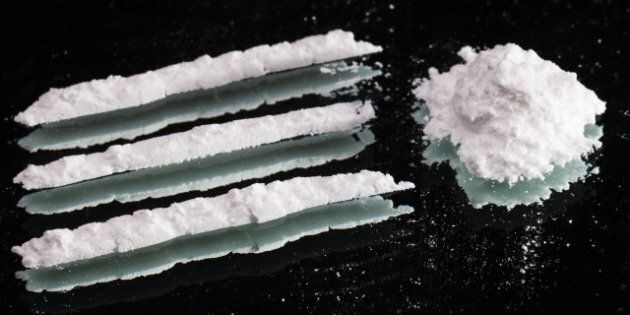
From grain to oil to copper, commodity prices have been booming for the past decade. But there’s one commodity that’s moving in the opposite direction, and very much so: Cocaine.
The stereotypical drug of choice for high-paid executives has seen prices declining for the past three decades, and in recent years, that trend has accelerated.
Experts point to two reasons for this: The rise of mass shipping of coke, and an economic crisis that has made people think twice about how much of their disposable income they’re willing to snort up their nose.
In a recent article at Slate, Brian Palmer reports that coke prices have fallen between 80 and 90 per cent in the past 30 years. He attributes the drop to a rapid evolution in the cocaine business that has seen smugglers move to small aircraft, cargo ships and even submarines to move their wares.
“In their early days, even legendary drug kingpins like Pablo Escobar and the Ochoa brothers had to smuggle their cocaine out of the country in their own suitcases,” Palmer writes. “With the surge in demand that began at the end of the 1970s, however, the kingpins built out their empires, modernizing processing, transport, and retail networks, and managed to lower prices by more than 60 percent over the next 10 years.”
The price of pure cocaine now sits around $120 per gram in the U.S., though the street drug, typically cut with other substances, tends to cost in the $60- to $80-per-gram range.
The drop in prices should be cause for concern for law enforcement agencies and public health groups, but their fears may be assuaged by the other reason coke prices are falling: A lack of demand, caused by the global economic turmoil of recent years.
In a report released late last year, the European Monitoring Centre for Drugs and Drug Addiction noted that cocaine use appears to have entered a period of decline, which it attributed to fewer people being able to afford the rather pricey substance.
(At the same time, the report noted, the use of “legal highs” -- which tend to be much cheaper than coke -- has skyrocketed.)
That, in turn, has had one positive effect: A decline in coke-related crimes, at least in some jurisdictions.
Ireland’s national police service last year reported a nearly 80-per-cent decrease in the number of gangland killings, attributing it to a huge fall in demand for cocaine as a result of the recession.
The same trend is visible in New York City, where the director of NYU’s addiction centre said he sees “a slight but steady downward trend” in cocaine use.
“I treat patients in private practice. Many cocaine addicts tell me stories they don’t have enough money to buy it anymore,” Dr. Stephen Ross told the New York Post.
The number of accidental overdoses in the city fell from 478 to 273 between 2006 and 2010, the Post reported.
Even in Miami, arguably the cocaine capital of North America, the drug just isn’t as in demand as it used to be. The Miami Herald reported on a 14 per cent decline in coke overdoses from 2008 to 2009, and a 41 per cent decrease in 2010 in the number of people seeking coke addiction treatment.
"It's kind of ironic, given Miami's historic role in the cocaine industry," State University of New York drug trade expert Paul Gootenberg told the paper.
Gootenberg echoed the point other drug experts have been making.
"Florida is going through an enormous economic crisis," he said. "People don't have money to spend on drugs."
THE COST OF COCAINE IN EUROPE AND THE U.S.
Source: 2011 World Drug Report